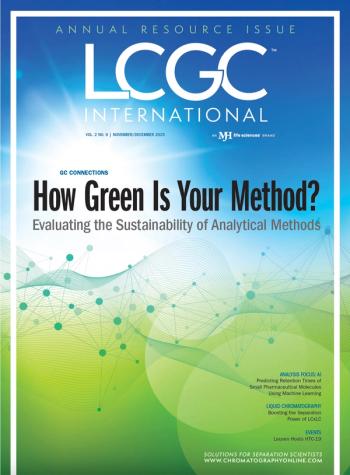
Best of the Week: GLP-1 Analysis, Career Opportunities for PhD Grads
Here is some of the most-read content posted on LCGC International this week.
This week, LCGC International published a variety of articles on hot topics in separation science. Below, we’ve highlighted some of the most popular articles that were published this week.
Kate Jones
As glucagon-like peptide-1 (GLP-1) receptor agonists gain prominence in the treatment of obesity and metabolic disease, their rapid rise is drawing intensified scrutiny and sparking fierce competition. The FDA has begun cracking down on unapproved versions of drugs like semaglutide, produced by compounding pharmacies, citing safety and quality concerns. At the same time, insurers are pushing back on coverage due to high costs and limited long-term data, creating significant access challenges for patients. This article aims to outline current and emerging trends in the analysis of GLP-1 receptor agonists, with a focus on liquid chromatography (LC), mass spectrometry (MS), and regulatory expectations.
Alasdair Matheson
In today’s fast (and getting faster) digital world, access to quality educational content is no longer limited to traditional classrooms, textbooks, journals, or print magazines. Scientists interested in chromatography can access all relevant information instantly with just a click. How can you sift through the noise to identify which information truly matters? LCGC International’s mission is to deliver practical, unbiased content that helps separation scientists perform more effectively in the workplace and learn the necessary practical skills to become a successful professional chromatographer.
Aaron Acevedo
Grape pomace, one of the main byproducts generated by the winery industry, is made up of solid materials—such as skins, pulp, and seeds—left over after the creation of wine or juice. Wine can contain exceptionally high levels of polyphenolic compounds, especially anthocyanins and tannins, which partially remain in the grape pomace after the vinification process. These substances have potential bioactivity and are particularly highlighted for being capable of preventing oxidative brain damage associated with aging, as well as downregulating gene expression linked to inflammatory pathways. Researchers from the Institute of Food Science Research (CIAL) in Madrid, Spain tested ways to characterize food byproducts using two-dimensional liquid chromatography (LC×LC).
Isabelle Kohler
For many PhD graduates in analytical sciences, the next step after their doctorate is often a career in industry. This transition, while promising, can sometimes be daunting due to the wide range of possible roles and a limited understanding of what those roles entail. The challenge is not the lack of opportunities but the lack of clarity about which roles align with the skills acquired during a PhD. This often makes it difficult for new graduates to find suitable positions, as you may not know which keywords to use during your job search.
Kate Jones
In this roundtable discussion focused on the experiences, challenges, and contributions of Women in Chromatography, LCGC International spoke to Ilaria Belluomo, Giorgia Purcaro, and Katelynn Perrault Uptmor. This dialogue delves into some of the key barriers that still need to be addressed for women to thrive in science, explores strategies for enhancing gender inclusivity, and hears invaluable career insights from our panelists, including the best advice they’ve received throughout their journeys. Part 5 of this conversation offers advice for young women looking to enter the chromatography field.
Newsletter
Join the global community of analytical scientists who trust LCGC for insights on the latest techniques, trends, and expert solutions in chromatography.



